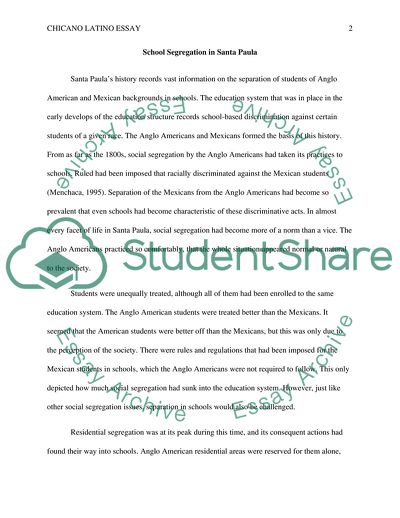Cite this document
(The Practice of Racial Differentiation and Social Segregation Essay Example | Topics and Well Written Essays - 1500 words, n.d.)
The Practice of Racial Differentiation and Social Segregation Essay Example | Topics and Well Written Essays - 1500 words. https://studentshare.org/sociology/1759169-chicano-latino-essay
The Practice of Racial Differentiation and Social Segregation Essay Example | Topics and Well Written Essays - 1500 words. https://studentshare.org/sociology/1759169-chicano-latino-essay
(The Practice of Racial Differentiation and Social Segregation Essay Example | Topics and Well Written Essays - 1500 Words)
The Practice of Racial Differentiation and Social Segregation Essay Example | Topics and Well Written Essays - 1500 Words. https://studentshare.org/sociology/1759169-chicano-latino-essay.
The Practice of Racial Differentiation and Social Segregation Essay Example | Topics and Well Written Essays - 1500 Words. https://studentshare.org/sociology/1759169-chicano-latino-essay.
“The Practice of Racial Differentiation and Social Segregation Essay Example | Topics and Well Written Essays - 1500 Words”. https://studentshare.org/sociology/1759169-chicano-latino-essay.


